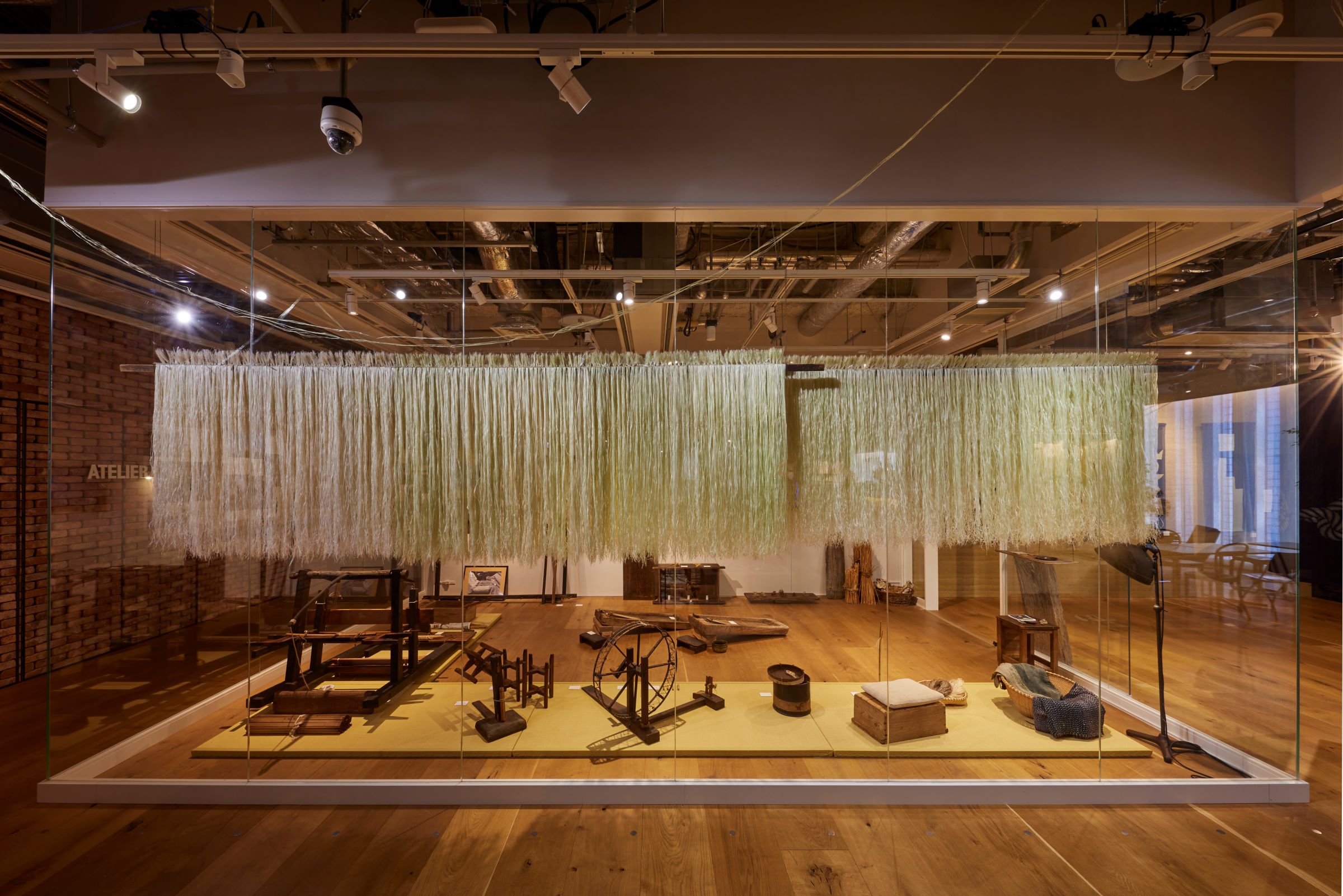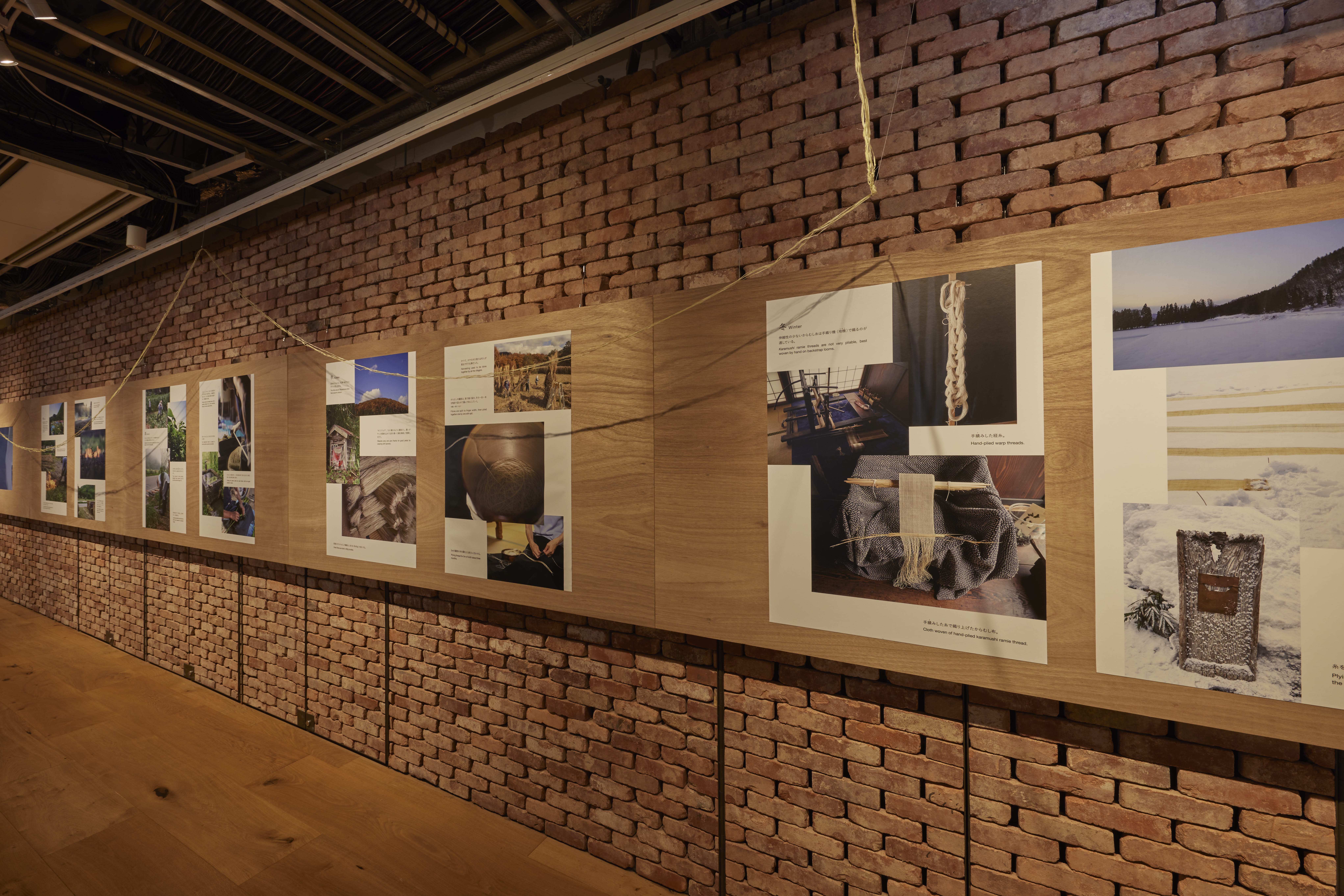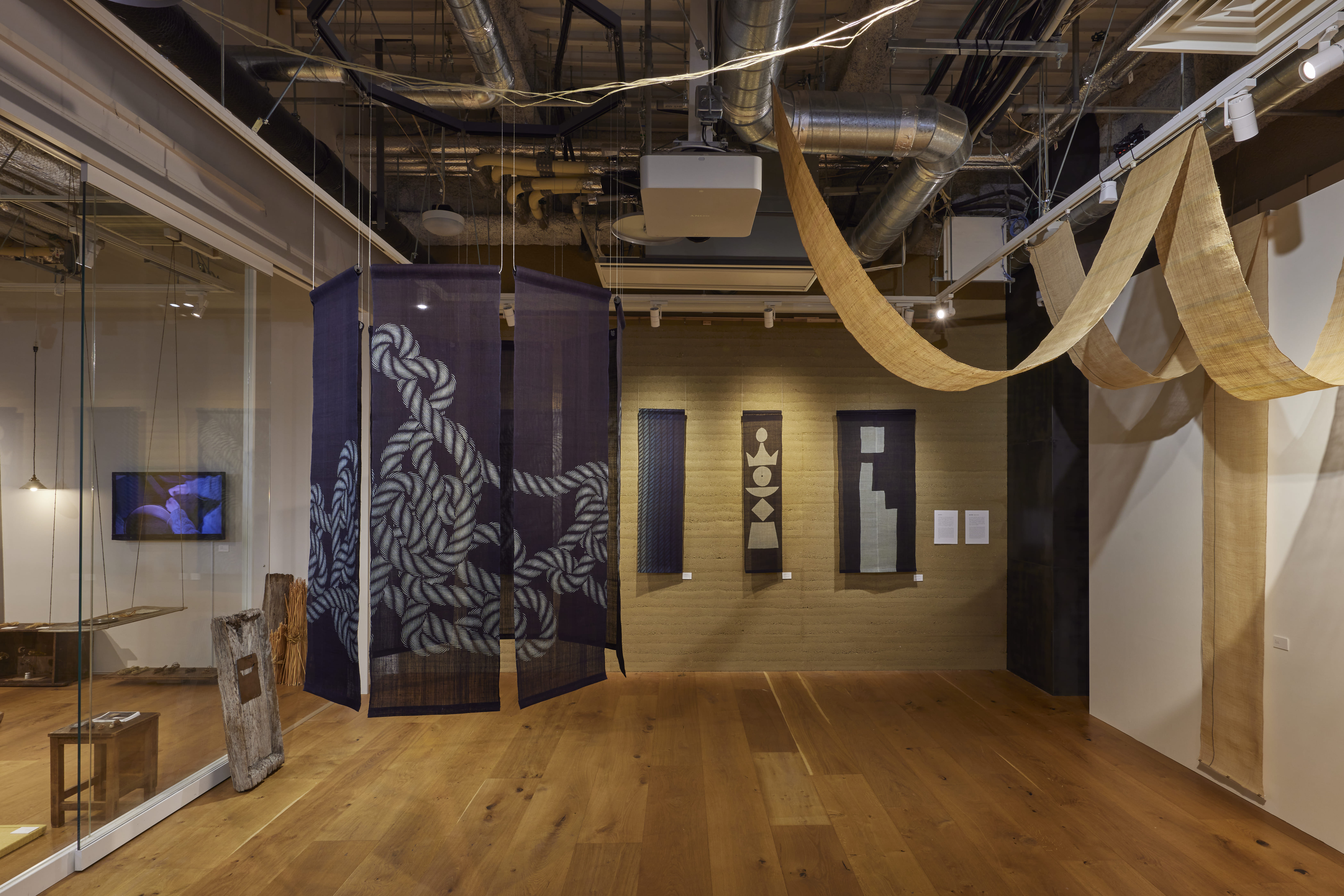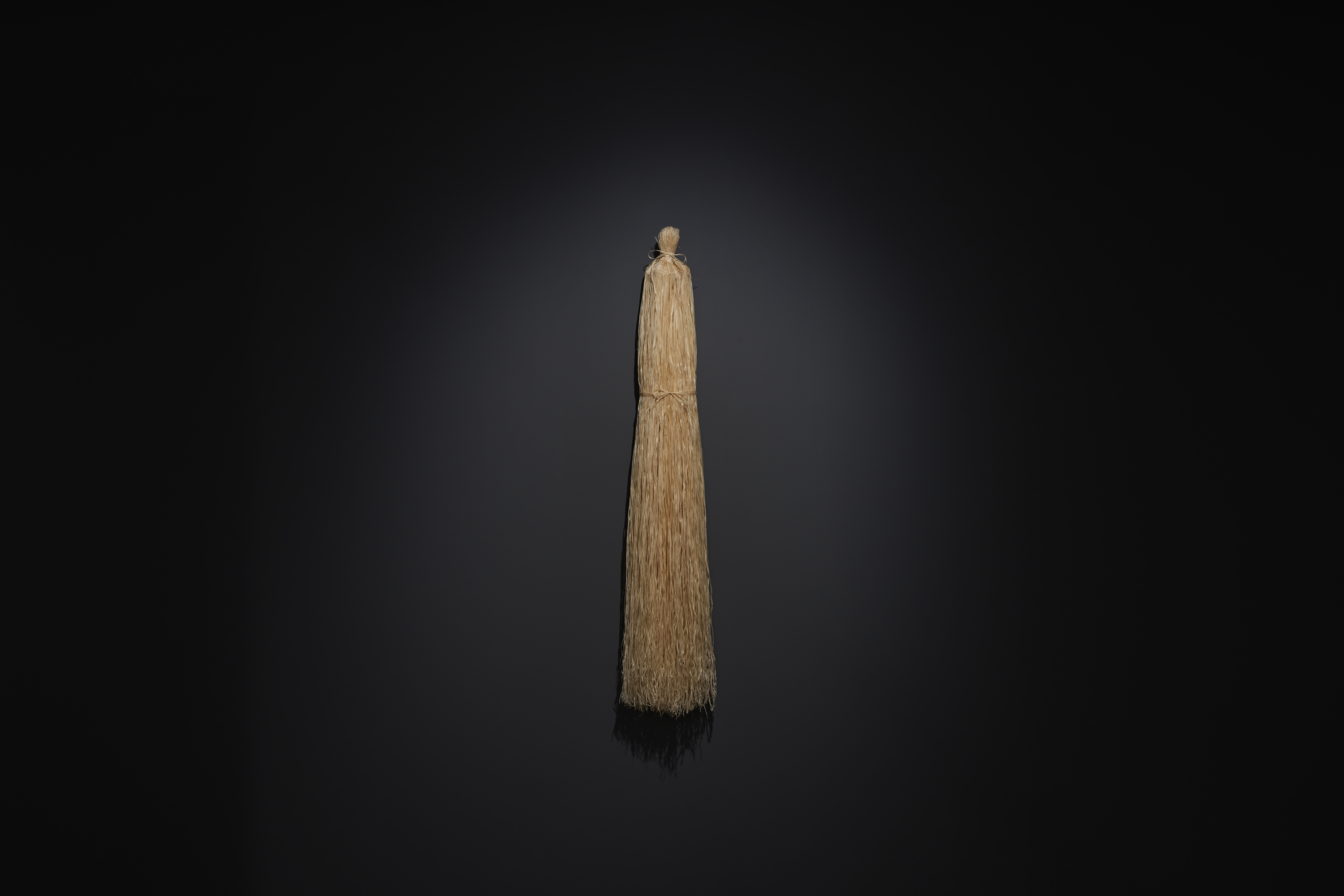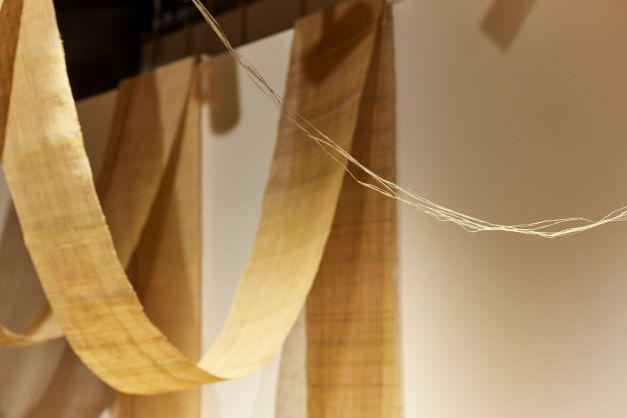Tracing the Origins of Materials
Watashifune: Works around Karamushi Friday, 3 November 2023 ― Sunday, 28 January 2024
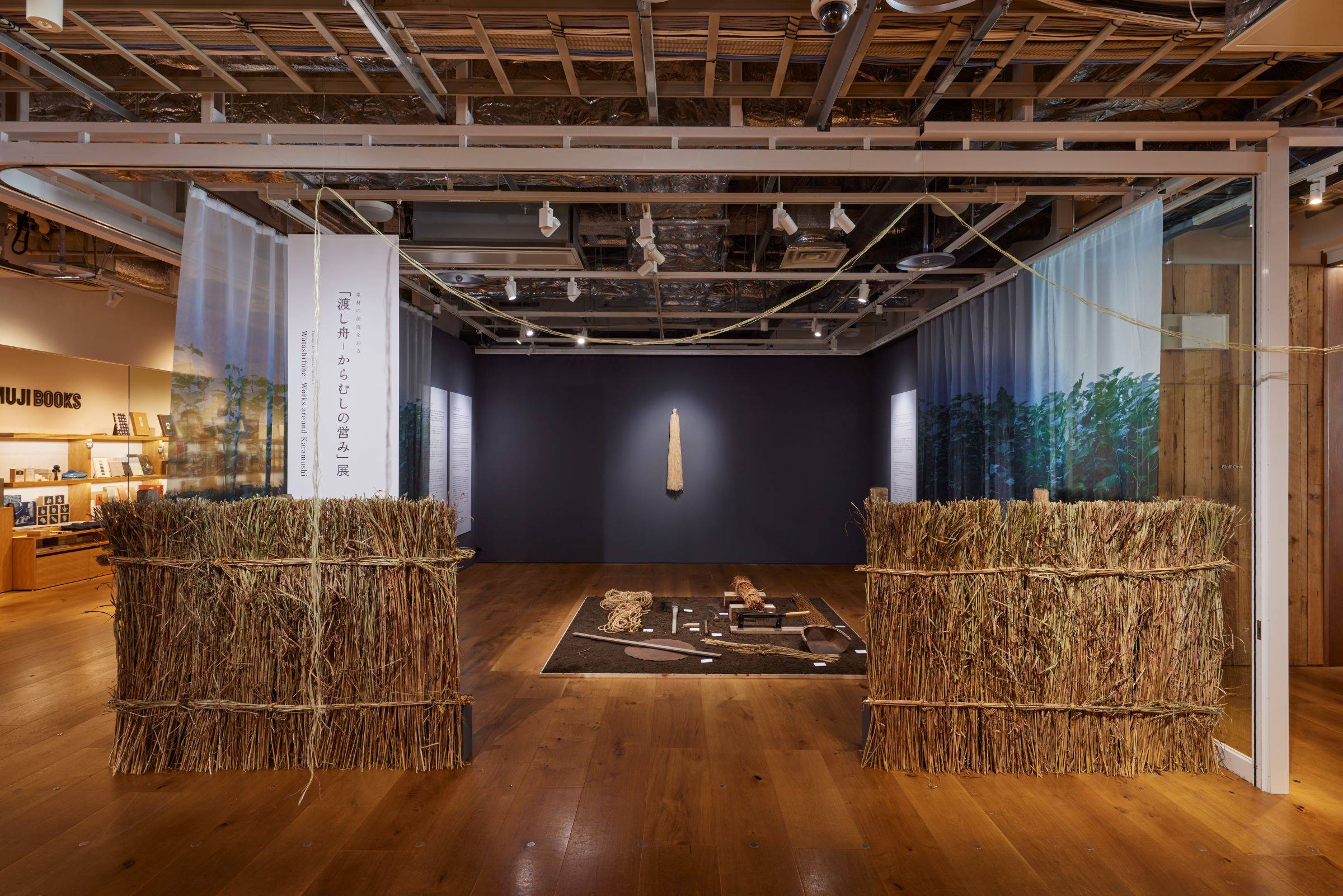

Having been handed down through human activities in different parts of the world, many traditional crafts face various challenges over time, such as changing lifestyles, the aging of craftspeople and the lack of successors.
“Tracing the Origins of Materials” is an initiative to introduce craftsmanship. We look at the raw materials, the producers using them and their traditional techniques: they are unchanged from the past, despite various challenges. It encourages us to understand their background and carefully convey them as part of our culture to empathize with them and then create new values from here.
“Karamushi”, also known as “Choma” (“Ramie” in English), is a perennial plant of the nettle family. It has been cultivated in a village called Showa, Fukushima, since at least the Edo period. The quality of the plant cultivated here is particularly high and has been valued as a raw material for top-quality fabrics such as “Echigo Jofu” and “Ojiya Chijimi”. However, due to changing lifestyles and depopulation, there are fewer and fewer people to succeed the current masters of this technique that has been handed down here for generations.
Watashifune was founded by two members, Etsuko Watanabe and Yukiko Funaki, in this historical village. They met when they applied for the “Karamushi weaving project ‘Orihime Hikoboshi’”, which started as an initiative to make more people aware of this material. Fascinated by activities around Karamushi, they have lived with it here in Showa ever since. From cultivation to harvesting and weaving in a traditional way, they work sincerely with the plant along with the changing of the seasons.
This exhibition consists of three parts: “Karamushi cultivation rooted in the seasons”, “Watashifune: The Works around Karamushi” and “Exploring Karamushi in the future”.
Through this exhibition, we hope to discover the beauty of the material created by traditional techniques, to learn about the works of Watashifune in relation to nature, and to start thinking about our daily lives and society from now on.
ATELIER MUJI GINZA
Karamushi passing through space and time
One of the interesting things about materials is that we can have conversations with people from the past through them. Guided by Takashi Kurata, a philosopher who has been conducting fieldwork in Showa for several years, I had an opportunity to watch the harvesting of Karamushi plants: it was on a midsummer’s day (“Doyo” in Japanese) in 2022. At 4.30am when the sun rose, the harvesting began one plant at a time. The harvested Karamushi was soaked in cold water and then before the end of the day the outer layer of the plants was peeled off. This “skin” was then pulled with a metal tool to extract a translucent blue fibre called “Kira”. The process continued until sunset, and the residual plant matter was then returned to the fields as part of a wonderful cycle to nurture the soil.
Just like us humans, each and every Karamushi plant is unique and has its own individuality. It is impossible to speak with our predecessors who inherited this art from the Jomon period, but I feel that we can be united with them beyond space and time, through the continuing tradition of Karamushi textile making.
Reiko Sudo (Textile designer)
We are greatly surprised and pleased that MUJI has turned its attention to this small source of craftmanship. Our activity in Showa is a very small operation, and at present we are unable to cater to a large market. However, there are definitely important messages hidden in this operation for people to live together with nature.
“Pleasant Life”, MUJI’s proposition to the world, and our tiny little activities… we strongly hope that the roots of both activities are connected deep in the ground. We believe that this will create a more beautiful life in the future…
Watashifune (Etsuko Watanabe and Yukiko Funaki)
Dates:
Friday, 3 November 2023– Sunday, 28 January 2024
Opening Times:
11:00 – 21:00
*Opening hours may change.
Venue:
MUJI GINZA 6F ATELIER MUJI GINZA Gallery 1 & 2, Admission free
Organized by:Ryohin Keikaku Co., ltd /Exhibition Cooperation:Watashifune/Space design:Masafumi Tashiro/Graphic design:Haruna Morita/Edited & Sound by:Akira Kasuga/Movie:Cited from”Karamushi no Koe” (Director:Daisuke Bundo/Produced by & Copyright:National Museum of Japanese History/2019)/Cooperation:Reiko Sudo/Samiro Yunoki/BUAISOU/National Museum of Japanese History/Ryosuke Toyama /Arisu Kadomoto /Eriko Yamauchi /Tamaki Hachisu/Site construction:HIGURE 17-15 cas
